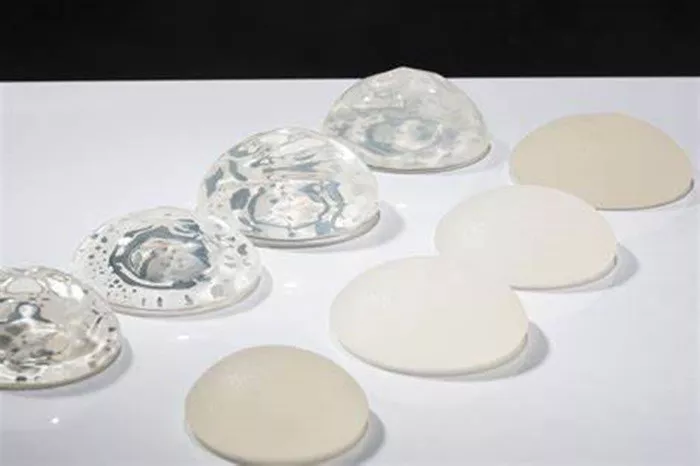Breast implants are medical devices implanted under the breast tissue or chest muscle to augment or reconstruct the breast. While they are designed to be durable, they are not lifetime devices. Understanding when and why breast implants might need to be replaced is crucial for anyone considering or already having undergone breast augmentation or reconstruction.
Introduction to Breast Implants
Breast implants can significantly improve body image and self-esteem. However, it’s important to recognize that they may not last a lifetime. Patients should be prepared for the possibility of future surgeries.
Types of Breast Implants
There are two main types of breast implants:
Saline Implants: Filled with sterile salt water.
Silicone Implants: Filled with silicone gel.
Each type has its own lifespan and potential issues.
Lifespan of Breast Implants
While some patients may never need to replace their implants, others might require replacement within a decade or so.
Manufacturer’s Guidelines
Most breast implant manufacturers suggest that implants can last between 10 and 20 years. However, this is not a strict rule.
Factors Influencing Implant Longevity
Several factors can influence the lifespan of breast implants:
Type of Implant: Silicone implants tend to be more durable than saline implants.
Surgical Technique: Proper surgical technique can reduce complications.
Patient’s Lifestyle: Physical activity and trauma can affect the integrity of the implants.
Body’s Reaction: Some bodies may develop complications that necessitate replacement.
See Also: 5 Healthiest Breast Implants
Reasons for Breast Implant Replacement
Breast implants may need to be replaced for a variety of medical and cosmetic reasons.
Rupture or Leakage
Implant rupture or leakage is one of the primary reasons for replacement.
Saline Implant Rupture
When a saline implant ruptures, the body absorbs the saline solution, and the implant deflates.
Silicone Implant Rupture
Silicone implant ruptures are less noticeable because the silicone gel may remain within the capsule formed by the body’s tissue. This is known as a “silent rupture.”
Capsular Contracture
Capsular contracture occurs when the scar tissue that naturally forms around the implant tightens and squeezes the implant. This can cause pain and an unnatural shape.
Implant Malposition
Over time, implants may shift from their original position. This can be due to gravity, aging, or trauma.
Rippling and Wrinkling
Rippling or wrinkling of the implant, particularly with saline implants, can be visible or palpable through the skin.
Changes in Aesthetic Preferences
Changes in a patient’s body over time or shifts in personal aesthetic preferences may lead to a desire for a different size, type, or shape of implant.
Aging of Implants
Implants, like any medical device, can degrade over time. This can lead to issues such as hardening, rupture, or a change in feel and appearance.
Health Concerns
In rare cases, patients may develop health concerns, such as infection or anaplastic large cell lymphoma (ALCL), associated with breast implants. This necessitates removal or replacement.
Signs That Breast Implants Need Replacement
Recognizing the signs that indicate a need for implant replacement is crucial for timely intervention.
Visible Changes
Deflation: Noticeable with saline implants.
Asymmetry: Changes in the symmetry of the breasts.
Rippling: Visible or palpable ripples or wrinkles.
Physical Symptoms
Pain or Discomfort: Pain around the implant area can indicate complications.
Changes in Sensation: Numbness or increased sensitivity.
Changes in Implant Position
Sagging: Implants may sag over time.
Shifting: Movement of the implant from its original position.
The Replacement Procedure
Replacing breast implants involves surgery. The complexity of the procedure depends on the reason for replacement and the condition of the implants and surrounding tissue.
Pre-Surgery Considerations
Consultation: Detailed consultation with a plastic surgeon.
Medical Evaluation: Health assessment to ensure suitability for surgery.
Surgical Procedure
Incision: The surgeon may use the original incision site or create a new one.
Removal and Replacement: The old implant is removed, and a new one is inserted.
Capsule Treatment: In cases of capsular contracture, the scar tissue may need to be removed or modified.
Post-Surgery Care
Recovery Time: Recovery can take several weeks.
Follow-Up: Regular follow-up appointments to monitor healing and implant position.
Risks and Complications
Like any surgery, breast implant replacement carries risks.
Common Risks
Infection: Post-surgical infections can occur.
Bleeding and Hematoma: Accumulation of blood in the surgical area.
Anesthesia Risks: Complications from anesthesia.
Specific Complications
Capsular Contracture: Recurrence of capsular contracture.
Implant Rupture: Risk of rupture during or after the procedure.
Changes in Nipple Sensation: Permanent or temporary changes.
Preventing the Need for Replacement
While not all replacements can be avoided, certain measures can prolong the lifespan of implants.
Regular Check-Ups
MRI and Ultrasound: Regular imaging tests can detect silent ruptures in silicone implants.
Physical Exams: Regular physical examinations by a healthcare provider.
Healthy Lifestyle
Avoid Trauma: Protect the chest area from injury.
Maintain a Healthy Weight: Fluctuations in weight can affect the appearance of implants.
Choosing the Right Surgeon
Experienced Surgeon: Selecting a skilled and experienced plastic surgeon can reduce the risk of complications.
Conclusion
Breast implants are not lifetime devices and may need replacement due to various reasons including rupture, capsular contracture, and changes in aesthetic preferences. Regular monitoring and maintaining a healthy lifestyle can help prolong the lifespan of implants. Patients should be aware of the signs that indicate a need for replacement and consult with a qualified plastic surgeon to discuss their options and ensure the best possible outcomes. Understanding the complexities of breast implant replacement can help patients make informed decisions about their breast health and aesthetic goals.
Related topics:

